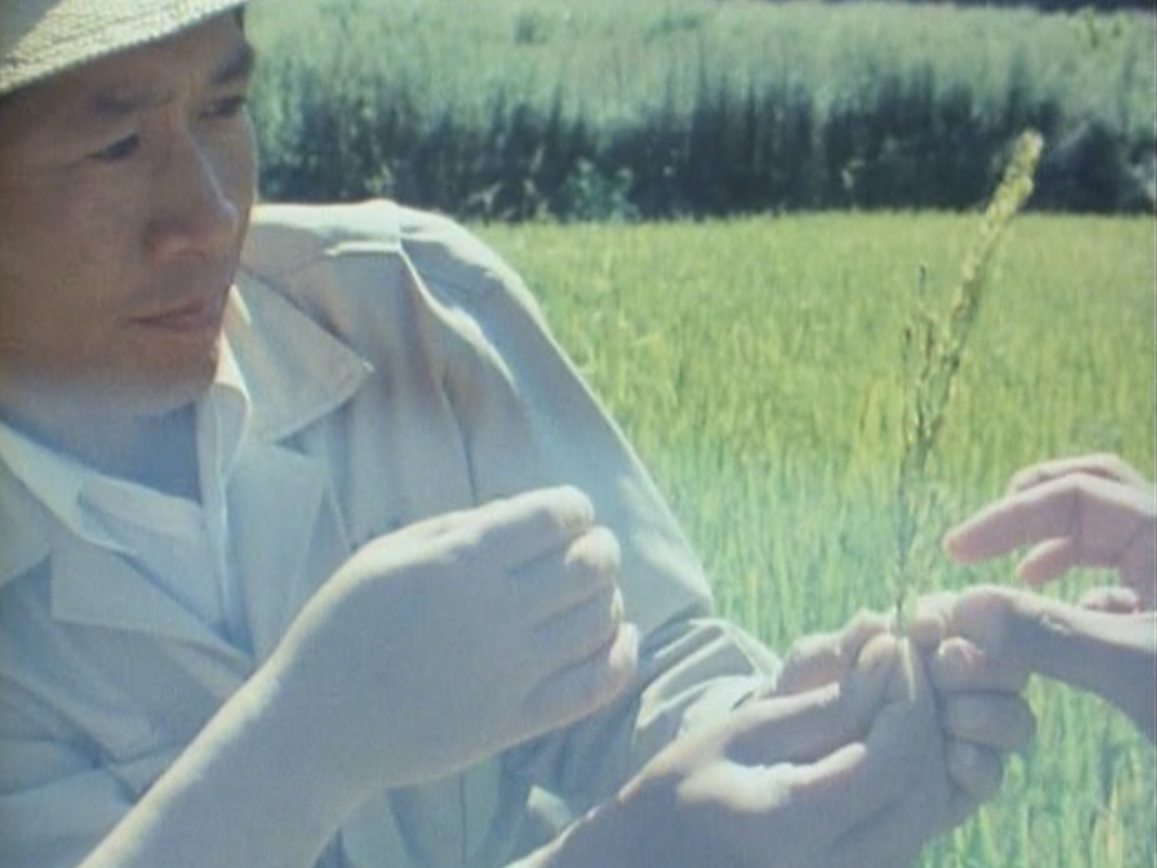
Kanai Katsu: Then there’s Furuyashikimura, which I really like. What was it like making a documentary after such a long time?
Tamura Masaki: What was it like? For a film released by Ogawa, it was a long time, but it didn't feel that way. First, I don’t really make such a distinction between documentaries and feature films. I’m not really sure why. And actually, in that time, I had been going to Magino in Yamagata every year to shoot. I mainly shot scenes of rice cultivation. Otherwise, I shot really concrete things like climate and mountain trees and water. If you made a mistake one year you had to wait for the next: that’s what it’s like filming nature. We did that for about seven or eight years. And of course we filmed the villager’s stories, which was something we weren’t able to do in Sanrizuka. That was Ogawa’s idea.1
“Through films such as A Japanese Village, which fuses scientific understanding and cultural awareness, and Peasants of the Second Fortress, which presents a scathing critique of authoritarian state power through an observational style of cinema akin to cinéma vérité, Ogawa was able to transcend the role of provocateur as proposed by Rouch, and MacDougall’s participative cinema, and presented a ‘graphic sensitivity’ to cultural otherness bringing to mind Vertov’s notion of the potential of the filmmaker’s spinning film reels to be the machinery of a factory creating ‘lightening bolts of truth,’ establishing a shared space not necessarily born of radicalism, but a desire to produce an alternative meta-narrative of the discourses of Japanese history and power.”
Benjamin Hegarty2
- 1Kanai Katsu, “Documentarists of Japan, No. 8: Tamura Masaki,” DocBox (Yamagata: YIDFF Publications, 1993). [Translated by Sharon Hayashi]
- 2Benjamin Hegarty, “Late Japanese New Wave Documentary and Cinematic Truth: Charting the Theory and Method of ‘Graphic Sensitivity’ Towards Cultural Otherness,” Colloquy, nr. 24 (Melbourne: Monash University, 2012) 78-89.

